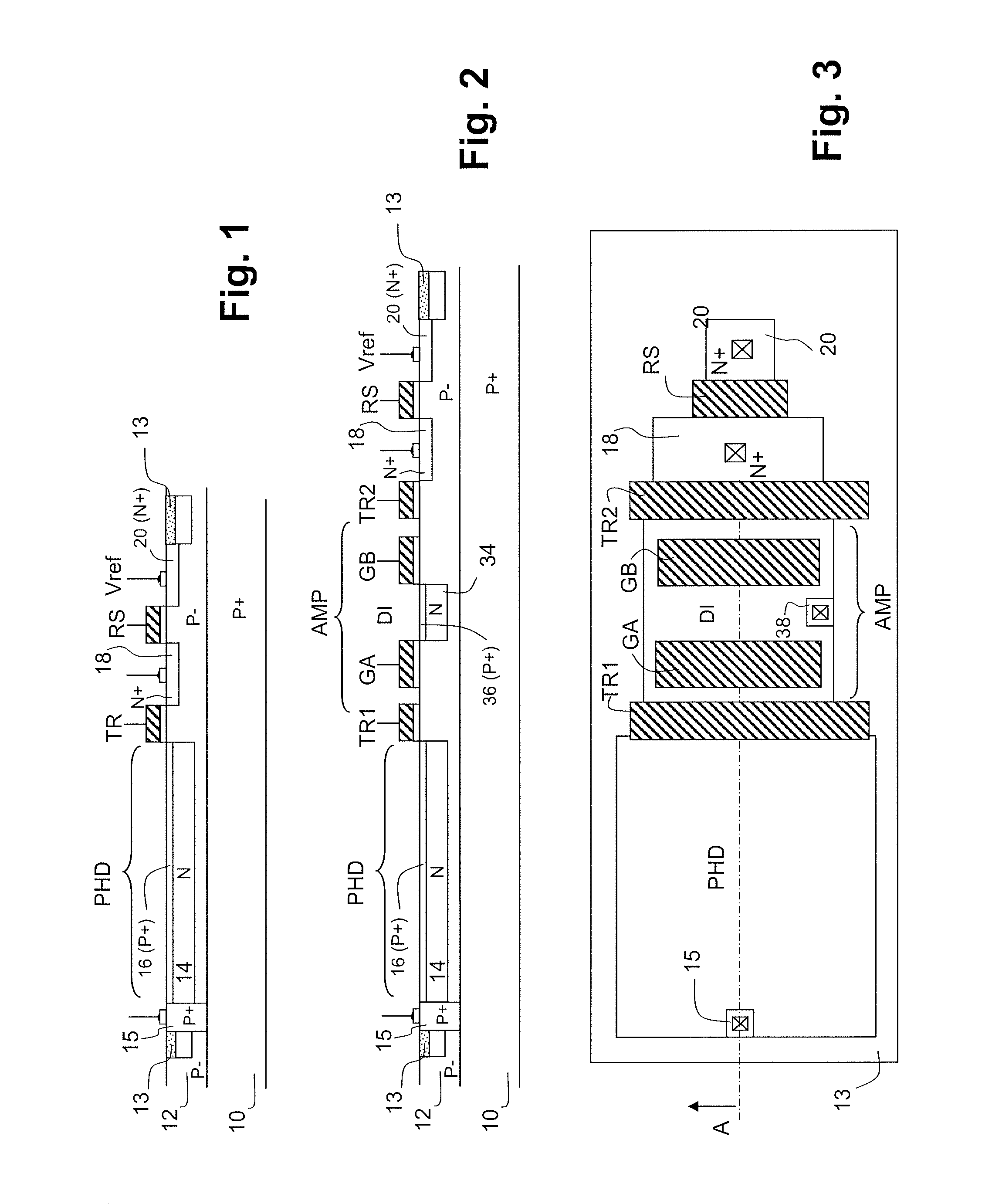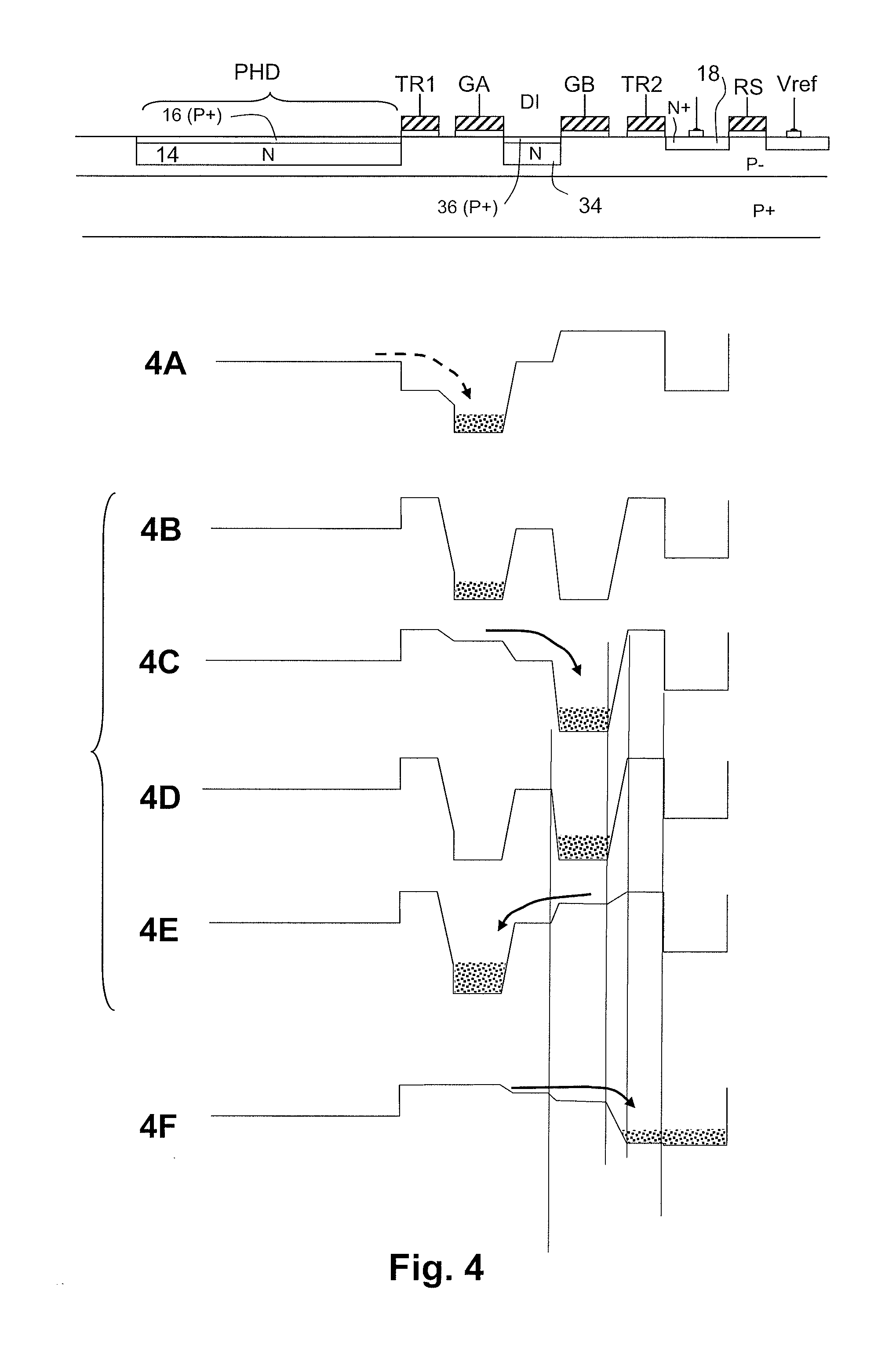Electron-multiplication image sensor
a multi-segment image and sensor technology, applied in the field of image sensors, can solve the problems of inability to multi-segment, increase the collision rate, and the signal-to-noise ratio is affected, and achieves low illumination levels, high illumination levels, and large dynamic range.
- Summary
- Abstract
- Description
- Claims
- Application Information
AI Technical Summary
Benefits of technology
Problems solved by technology
Method used
Image
Examples
Embodiment Construction
[0032]FIG. 1 shows the main elements of a conventional active pixel in CMOS technology. The pixel is formed in a substrate that preferably includes a lightly doped semiconductor active layer 12 of P− type (the symbol P− is used to denote this light doping) formed on the surface of a more heavily doped layer (P+). The pixel is isolated from the neighbouring pixels by an isolating barrier 13 that completely surrounds it. This barrier may be a surface isolating trench above a P-type well.
[0033]The pixel includes a photodiode region PHD, the perimeter of which follows the outline of an N-type semiconductor region implanted in part of the depth of the active layer 12. This implanted region is surmounted by a surface region 16 of P+ type, which is maintained at a zero reference potential. The photodiode is said to be “pinned” (the surface potential of the P+ surface region being fixed). The zero reference potential is that applied to the P− active layer. In the simplest case, this is the ...
PUM
 Login to View More
Login to View More Abstract
Description
Claims
Application Information
 Login to View More
Login to View More - R&D
- Intellectual Property
- Life Sciences
- Materials
- Tech Scout
- Unparalleled Data Quality
- Higher Quality Content
- 60% Fewer Hallucinations
Browse by: Latest US Patents, China's latest patents, Technical Efficacy Thesaurus, Application Domain, Technology Topic, Popular Technical Reports.
© 2025 PatSnap. All rights reserved.Legal|Privacy policy|Modern Slavery Act Transparency Statement|Sitemap|About US| Contact US: help@patsnap.com



